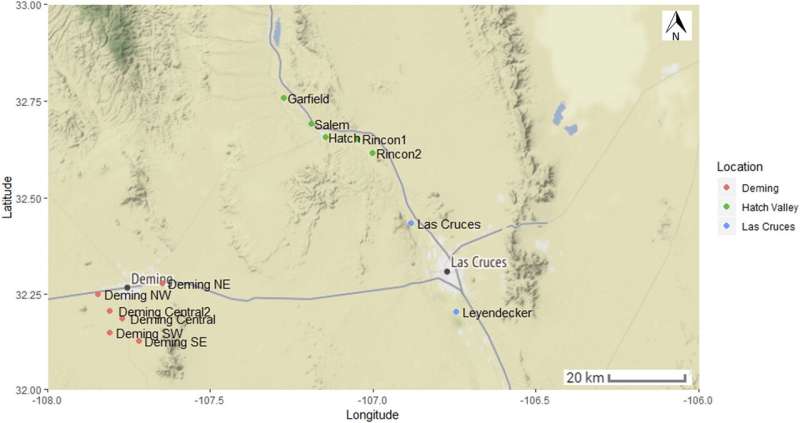Fall precipitation predicts abundance of curly top disease and guides weed management

Transmitted by an insect known as the beet leafhopper, curly top disease is a viral disease affecting many crops, including melons, peppers, sugar beets, and tomatoes. Curly top can kill or stunt the plants or result in poorly developed fruit or no fruit at all.
As virus outbreaks are erratic in southern New Mexico and there is no chemical treatment, chile pepper growers have asked for ways to predict when and if they need to be concerned about the disease. Scientists know that the beet leafhopper hosts on the London rocket, a mustard plant, and that greater London rocket abundance in the fall and winter leads to more curly top diseases in crops in the following growing season.
Rebecca Creamer, a plant pathologist at New Mexico State University in Las Cruces, has been working on curly top virus since the mid-1990s. Understanding that London rocket growth and survival is dependent on fall precipitation, Creamer and her colleague Erik Lehnhoff collected fall precipitation data and counted leafhopper numbers on insect traps at numerous New Mexico sites from 2001 to 2018.
"We determined that beet leafhopper numbers in the spring are strongly related to October and November precipitation—more precipitation in these months led to more beet leafhoppers in the spring," said Creamer. "We also discovered that on a farm where good weed control methods mostly removed London rocket through the fall and winter, beet leafhopper numbers were low."
These results will help growers predict future beet leafhopper abundance based on fall precipitation and make informed decisions about weed management and ultimately improve crop yields. "Observations and leafhopper trapping over the years led to hypotheses about the relationships between weed hosts, the leafhoppers, and weather patterns," Creamer adds. "The only real surprise was how well the numbers in the models backed up the hypotheses."
More information: Erik Lehnhoff et al, Prediction of Early Season Beet Leafhopper Populations in Southern New Mexico, Plant Health Progress (2020). DOI: 10.1094/PHP-08-19-0051-FI
Provided by American Phytopathological Society





















